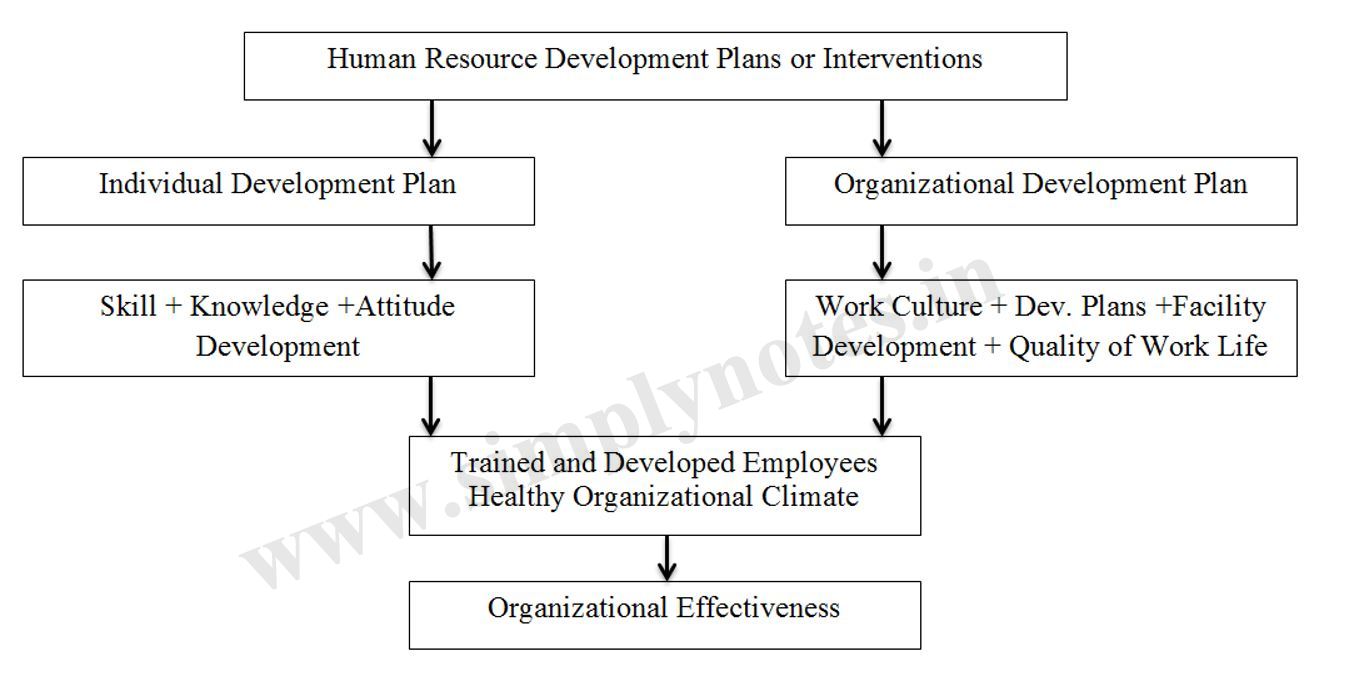HRM Processes and HRD Climate Variables
HRD climate is an integral part of organizational climate. It can be defined as the empoyee’s perception about the development environment of their organization. The essence of HRD climate is the importance which it gives to the development of OCTAPACE culture (developed by T.V. Rao and Udai Pareek) in an organization. OCTAPAC stands for eight important values viz.,
| Values | Indicators |
| Openness | Disclosure of one’s feelings |
| Confrontation | Facing problems and finding their solutions |
| Trust | Mutual confidence |
| Authenticity | Willingness to acknowledge one’s feelings |
| Proaction | Willingness of the organization to take initiative in influencing a situation instead of merely reacting to it. |
| Autonomy | The quality of an individual to seek help from others without feeling inferior. |
| Collaboration | Members working in teams |
| Experiment | Taking action on a trail basis initially. |
HRD Outcomes
HRD instruments and processes make people more committed and satisfied, where they tend to give their best to the organization enthusiastically. Human resource development mechanism generates human resources development climate and processes human resource development climate and processes generate human resources development outcomes. Thus human resource development outcome is the result of human resource development mechanism and human resource development processes. Better human resource development climate results in better human resource development outcomes e.g. mare competent, satisfied and committed employees besides these outcomes, it results in better utilization of internal resources, team-work and better organizational health. An organization with competent and satisfied people is likely to be more effective in comparison development an outcome in the matrix is explained as under. · HRD outcomes are the result of HRD climate and processes. · Better HRD climate and processes result in more competent, satisfied and committed people. · HRD processes are many whereas HRD outcomes are limited. · HRD outcomes generate and determine organizational effectiveness. · An organization with competent and committed workers is likely to be more effective. · An organization with poor HRD outcomes is the result of poor HRD climate, poor policies and commitment of its top management it shows that there is need of improvement in organizational climate and processes.
Organizational Effectiveness
A sound HRD system is perhaps the most important element in orgznizational effectiveness which not only ensures smooth performance but also long-tern survival and growth of the organization. While other resources like technology, capital assets can be bought, only resources which can’t be bought is motivated Human Resources which help in the growth of the organization. Hence, HRD has become very important. The HRD can play effective role in :
i. Optimising the use of employees for the growth of the organisation.
ii. Enabling employees to grow with the organisation.
iii. Helping in the congruence of individual aspirations and organisational expectations.
iv. Promoting collaboration and team spirit by establishing a climate of trust, openness and Interdependence.
v. Maximising the effectiveness of the employees and organization.
vi. Maximizing managerial effectiveness by having an involved, committed and highly motivated team of managers.
vii. Building or acquiring the skills necessary to meet existing and long-term organizational needs.
viii. Providing a favaourable work environment and consciously fostering an open, largely participative management style based on trust and cooperation.
ix. Achieving good employer-employee relations through regards for basic human values.
Organizational effectiveness results from trained and developed employees working in a healthy organization climate which results both individual development interventions and organizational development plans or interventions as shown in figure.
The HRD system which is as much concerned with to all areas of the day to day working of the organisation cannot succeed without the total commitment of the top management. The role of top management is very important in implementation of HRO plans for developing committed human resources and the work-environment committed to human resources.

